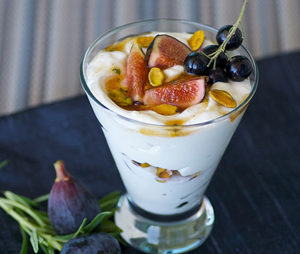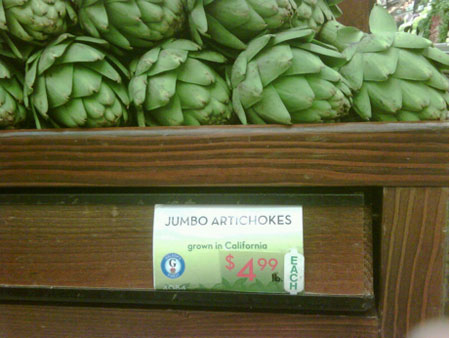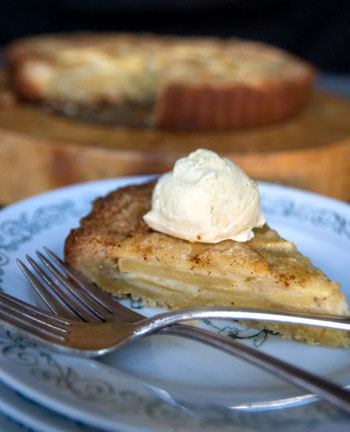 Oscar Wilde said, "I can resist everything but temptation." I think he had fresh figs in mind when he said that.
Oscar Wilde said, "I can resist everything but temptation." I think he had fresh figs in mind when he said that.
Consider this: Yesterday morning at the Hillcrest farmers' market, I spotted close to a dozen people eating fresh figs as they shopped. That's because everything about fresh figs is irresistible -- their pleasingly plump stature, their velvet skin splitting with ripeness, their ambrosial pink flesh.
Despite fresh figs' high price tag, usually $4-6 per pound, San Diego shoppers couldn't get enough of them, including me. I also can't get enough of these simple, no-bake Greek Yogurt, Fresh Fig, and Black Currant Parfaits. This dessert proves that opposites attract -- sweet figs and tart black currants, syrupy honey and spicy cinnamon, and earthy rosemary and tangy lemon zest are enfolded in luscious, creamy Greek yogurt.
I just know Oscar Wilde wouldn't have been able to resist them either.


 One night last week Jeff came home from work and handed me a bag from his clinic. I thought, "Yes! More free anti-wrinkle cream!" (Having a dermatologist as a husband does have its advantages). When I peeked inside the bag, however, I discovered something even better than antioxidant cream: a dozen plump, brilliant green figs that were beginning to split from ripeness. "Wow! Where did you get the fresh figs?" I asked. "Adel gave them to me from the tree in her yard," he said.
One night last week Jeff came home from work and handed me a bag from his clinic. I thought, "Yes! More free anti-wrinkle cream!" (Having a dermatologist as a husband does have its advantages). When I peeked inside the bag, however, I discovered something even better than antioxidant cream: a dozen plump, brilliant green figs that were beginning to split from ripeness. "Wow! Where did you get the fresh figs?" I asked. "Adel gave them to me from the tree in her yard," he said. I've never really gotten into making bread. I do it occasionally, but it's not my passion. When I want to bake something I usually don't have much patience so quick breads are more my style.
I've never really gotten into making bread. I do it occasionally, but it's not my passion. When I want to bake something I usually don't have much patience so quick breads are more my style. This past weekend, it was a bit cold. After Levi’s flag football game, I came home, grabbed 4 cooking magazines and got under the covers. I earmarked half of each issue and not only did I read each and every one of them but I spent almost the entire next day in the kitchen.
This past weekend, it was a bit cold. After Levi’s flag football game, I came home, grabbed 4 cooking magazines and got under the covers. I earmarked half of each issue and not only did I read each and every one of them but I spent almost the entire next day in the kitchen.
